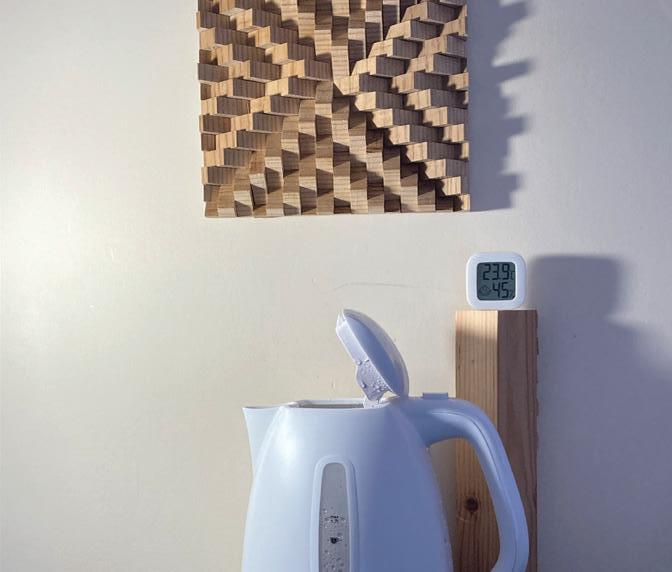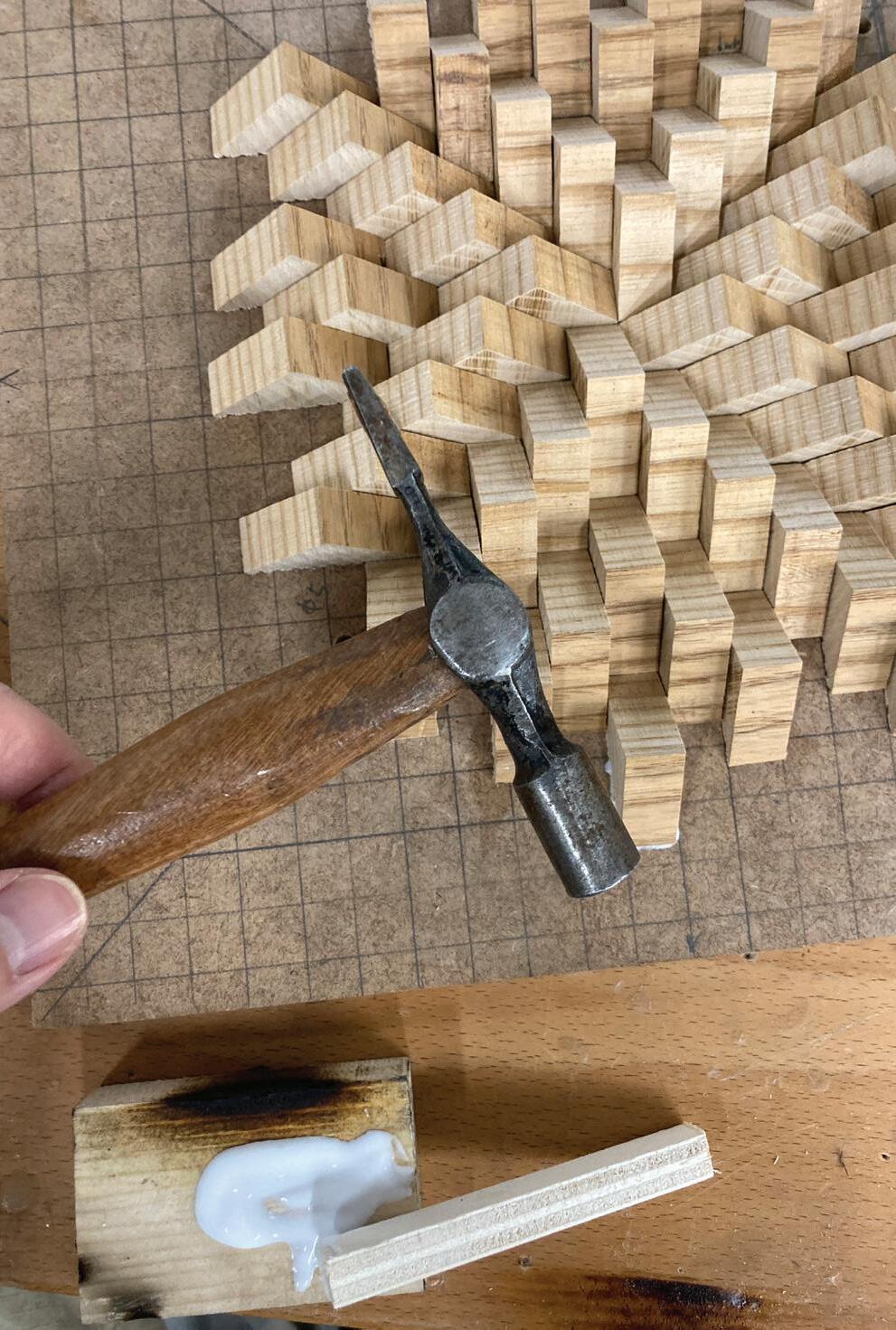
1 minute read
MOISTURE
Moisture On Finishing Moisture On Bonding
Two coats of beeswax are applied to the panel’s surface as a protective coating for the oak to enhance its durability and appearance.
Advertisement
Beeswax has natural water-repellent properties. When applied to oak wood, it creates a protective barrier that helps prevent moisture from penetrating the surface. This can reduce the risk of warping, cracking, or other damage caused by moisture absorption.
It is also a more sustainable finishing than varnishes and polyurethane as it is a renewable resource. It is also non-toxic and chemical-free.
The oak triangular components and the fiberboard are chemically bonded with PVA (polyvinyl acetate) glue. It is not inherently moisture-resistant. However, an interior build like these panels provides adequate strength and durability where exposure to moisture is minimal.

Yet, wood glue would be considered a better choice compared to PVA glue when this is replicated on construction sites as it provides stronger bond strength and moisture resistence.

FIGURE 23
Figure 21
Another advantage of wood glue over PVA glue would be the longer work time which could prevent me from hammering some of the pieces into the pattern as the glue has set.

The steam experiment aimed at providing an exaggerated test simulating a moist and warm climate. A kettle and a thermometer-moisture meter were used.
Water was boiled for a consecutive 10 mins where steam reached the panel. The meter is placed slightly below the panel, and the reading showed a 7°C increase in temperature and a 37% increase in moisture.
A controlled photograph is taken of the panel showing it at 23.9°C and 45% in humidity, which is the normal state.
This is taken after the 10-min steam test, where deeper contrast of the grains and a bit of sheen appeared.









